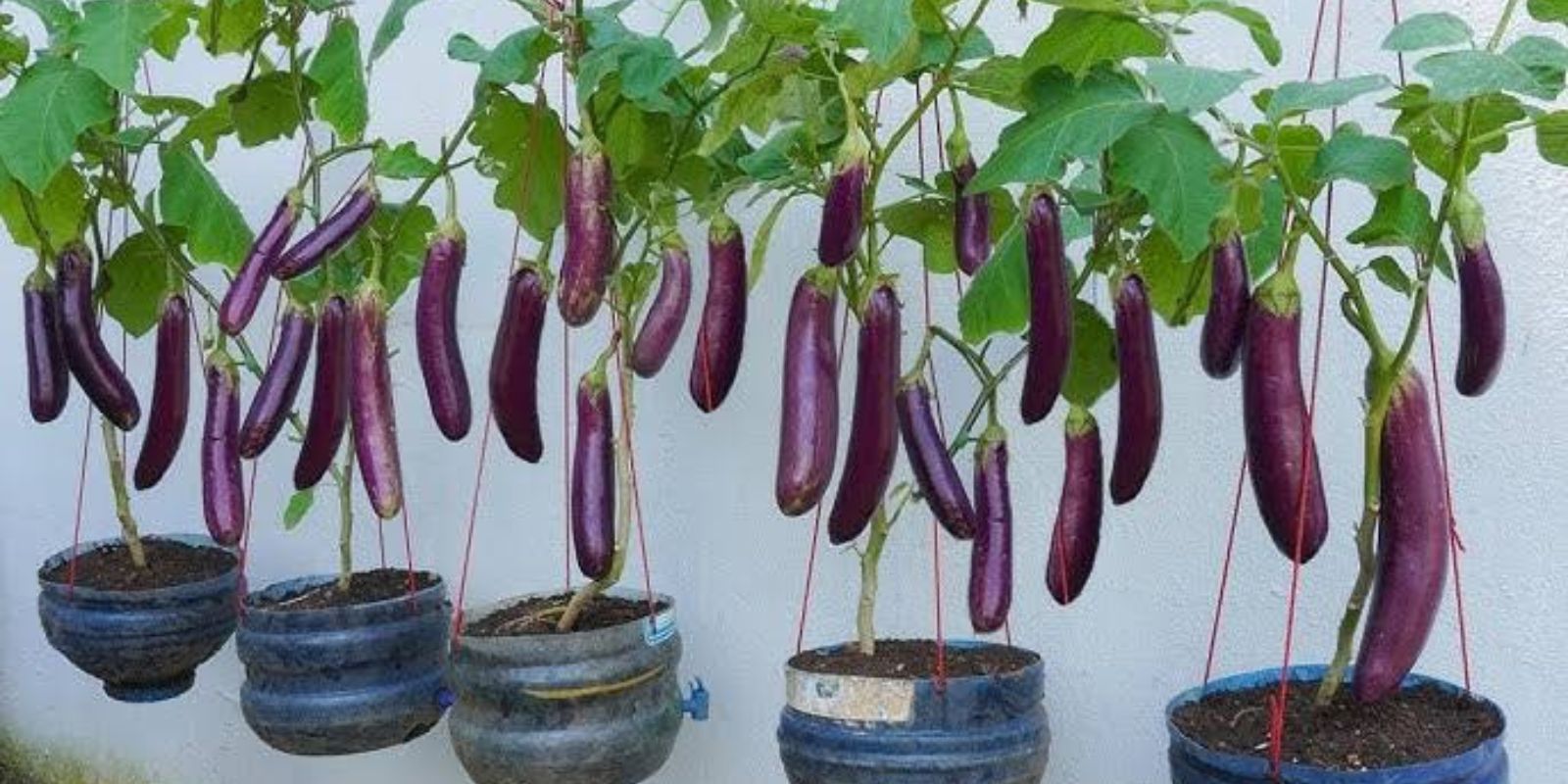Eggplants, also known as aubergines, are a delicious and versatile vegetable that can easily be grown at home, even if you don’t have a traditional garden. Growing eggplants in containers is an excellent solution for urban gardeners or anyone with limited outdoor space. With the right care and techniques, you can enjoy a bountiful harvest of homegrown eggplants. Here’s everything you need to know to get started.
Why Grow Eggplants in Containers?
Growing eggplants in containers offers flexibility and convenience. Containers allow you to move the plants to the sunniest spots, protect them from pests, and maintain optimal growing conditions. Additionally, compact eggplant varieties have been specially bred to thrive in smaller spaces, making container gardening an excellent choice.
Step-by-Step Guide to Growing Eggplants in Containers
1. Select the Right Variety
Choosing the right eggplant variety is essential for container gardening. Compact varieties like:
- ‘Fairy Tale’ – A small, striped variety with sweet flavor.
- ‘Little Fingers’ – Produces slim, tender eggplants perfect for grilling.
- ‘Patio Baby’ – Specifically bred for small spaces, this variety is ideal for pots.
These types of eggplants are well-suited to grow in confined spaces and produce high yields.
2. Choose the Right Container
The size and type of container you choose can significantly impact your plant’s growth:
- Size: A container that is at least 12-14 inches in diameter and depth provides enough room for root growth.
- Material: Choose containers made of plastic, ceramic, or wood with adequate drainage holes to prevent waterlogging.
- Drainage: Good drainage is critical; ensure your container has multiple holes at the bottom.
3. Prepare the Soil
Eggplants thrive in nutrient-rich, well-draining soil:
- Use high-quality potting mix specifically designed for vegetables.
- Enrich the soil with compost or well-rotted manure to provide essential nutrients.
- Maintain a soil pH between 5.5 and 7.0, as eggplants prefer slightly acidic to neutral soil.
4. Planting Seeds or Seedlings
- Starting Seeds Indoors: Begin 6-8 weeks before the last expected frost date. Sow seeds ¼ inch deep in seed trays. Keep the soil moist and warm (70-85°F) for germination.
- Transplanting: Once seedlings reach 4-6 inches tall and all danger of frost has passed, transplant them into containers.
- Spacing: If planting multiple eggplants in a larger container, leave 18-24 inches of space between plants.
5. Provide Optimal Growing Conditions
Eggplants require specific conditions to thrive:
- Sunlight: Place the containers in a location that receives 6-8 hours of direct sunlight daily.
- Temperature: Eggplants grow best in daytime temperatures of 70-85°F (21-29°C) and nighttime temperatures above 55°F (13°C). Protect plants from sudden cold snaps with row covers or by moving containers indoors.
6. Watering and Feeding
- Watering: Keep the soil consistently moist but avoid waterlogging. Water deeply at the base of the plant to prevent wetting the foliage, which can lead to fungal issues.
- Feeding: Apply a balanced liquid fertilizer every 2-3 weeks to ensure healthy growth and fruit production. A fertilizer with equal parts nitrogen, phosphorus, and potassium works well.
7. Provide Support for the Plants
Eggplants, especially those producing heavy fruits, may require support:
- Stakes or Tomato Cages: Use stakes or small cages to support the plants as they grow. This prevents the stems from bending under the weight of the fruit.
- Pruning: Remove yellowing or damaged leaves and side shoots to improve air circulation and focus the plant’s energy on fruit production.
8. Control Pests and Diseases
- Common Pests: Eggplants are susceptible to pests like aphids, flea beetles, and spider mites. Inspect plants regularly, and treat infestations with organic insecticidal soap or neem oil.
- Prevent Diseases: Avoid overhead watering and ensure proper spacing to reduce the risk of fungal diseases like powdery mildew or blight.
9. Harvesting Eggplants
Knowing when to harvest is key to enjoying flavorful eggplants:
- Timing: Most eggplants are ready for harvest 60-80 days after planting. Look for fruits that are firm, glossy, and reach their mature size.
- Harvest Method: Use a sharp knife or scissors to cut the fruit, leaving a small portion of the stem attached. Avoid pulling the fruit, as this can damage the plant.
10. Maximizing Your Yield
- Companion Planting: Grow eggplants alongside beans, peas, or marigolds to deter pests and boost yields.
- Mulching: Apply mulch around the base of the plant to retain soil moisture, regulate temperature, and suppress weeds.
- Regular Monitoring: Check for signs of stress, pests, or diseases and address issues promptly.
Benefits of Growing Eggplants in Containers
Growing eggplants in containers offers numerous advantages:
- Space-Saving: Perfect for balconies, patios, or small backyards.
- Portability: Easily move plants to optimal locations for sunlight or protection from adverse weather.
- Pest Control: Containers make it easier to monitor and manage pest infestations.
- Aesthetic Appeal: Eggplants add greenery and a pop of color to your outdoor spaces.
Tips for Success
- Use self-watering containers to maintain consistent soil moisture.
- Rotate containers periodically to ensure even sunlight exposure.
- Keep plants well-fed and pruned for optimal growth.
Conclusion
Growing eggplants in containers is an easy and rewarding way to enjoy fresh, homegrown produce, even without a garden. With careful attention to variety selection, soil preparation, watering, and pest management, you can achieve a thriving eggplant harvest.
Ready to give it a try? Start your container garden today and experience the satisfaction of growing your own delicious eggplants! Share your gardening journey or your favorite eggplant recipes in the comments below. 🌱🍆

